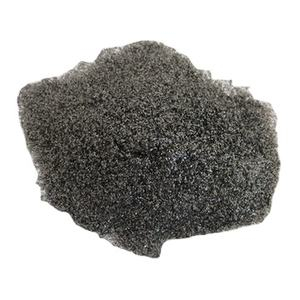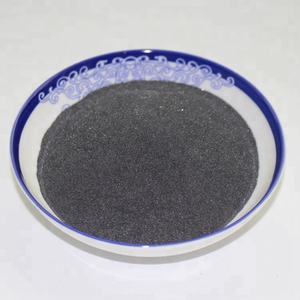1. Essential Chemistry and Structural Characteristics
1.1 Crystalline vs. Amorphous Boron: Atomic Plan and Pureness
(Boron Powder)
Boron, component 5 on the table of elements, exists in multiple allotropic kinds, with crystalline and amorphous powders being one of the most industrially relevant.
Crystalline boron usually adopts a rhombohedral framework (α-rhombohedral) composed of B ââ icosahedra linked in a complex three-dimensional network, displaying high firmness, thermal security, and semiconductor habits.
On the other hand, amorphous boron lacks long-range atomic order, consisting of disordered collections of boron atoms that result in greater chemical reactivity as a result of hanging bonds and architectural problems.
Amorphous boron is generally produced with chemical reduction of boron halides or thermal decomposition of boron hydrides, generating fine powders with bit sizes varying from nanometers to micrometers.
High-purity amorphous boron (> 95% B) is essential for sophisticated applications, as pollutants such as oxygen, carbon, and steels can considerably modify burning kinetics, electrical residential properties, and catalytic activity.
The metastable nature of amorphous boron makes it vulnerable to formation at elevated temperature levels (over 800 ° C), which can be leveraged or minimized depending on the meant usage.
1.2 Physical and Digital Residence
Boron powders, specifically in amorphous type, exhibit distinct physical properties originating from their electron-deficient nature and multicenter bonding.
They have a high melting factor (around 2076 ° C for crystalline boron) and extraordinary hardness (second just to diamond and cubic boron nitride), making them suitable for wear-resistant layers and abrasives.
Amorphous boron has a bandgap of about 1.5– 1.6 eV, intermediate in between metals and insulators, making it possible for semiconductor-like habits with tunable conductivity through doping or issue engineering.
Its reduced thickness (2.34 g/cm SIX) boosts performance in light-weight energised systems, while its high specific power web content (~ 58 kJ/g upon oxidation) surpasses numerous standard fuels.
These attributes placement boron powders as multifunctional materials in energy, electronic devices, and architectural applications.
( Boron Powder)
2. Synthesis Approaches and Industrial Manufacturing
2.1 Production of Amorphous Boron
The most usual approach for generating amorphous boron is the decrease of boron trichloride (BCl four) with hydrogen at moderate temperature levels (600– 800 ° C) in a fluidized bed reactor.
This procedure generates a brownish to black powder composed of aggregated nanoparticles, which is after that purified with acid leaching to eliminate recurring chlorides and metal impurities.
A different path entails the thermal decomposition of diborane (B â H SIX) at lower temperature levels, generating ultrafine amorphous boron with high surface area, though this technique is much less scalable due to the high price and instability of borane forerunners.
Much more lately, magnesium decrease of B â O five has been discovered as a cost-efficient technique, though it needs cautious post-processing to get rid of MgO by-products and accomplish high purity.
Each synthesis course provides trade-offs between yield, purity, particle morphology, and manufacturing price, affecting the option for particular applications.
2.2 Filtration and Fragment Engineering
Post-synthesis filtration is vital to enhance efficiency, especially in energetic and electronic applications where contaminations function as response inhibitors or charge traps.
Hydrofluoric and hydrochloric acid treatments efficiently liquify oxide and metal impurities, while thermal annealing in inert ambiences can further decrease oxygen web content and support the amorphous framework.
Bit size reduction via sphere milling or jet milling enables tailoring of area and reactivity, although excessive milling might cause premature crystallization or contamination from grinding media.
Surface area passivation methods, such as finish with polymers or oxides, are used to avoid spontaneous oxidation during storage while preserving sensitivity under regulated ignition conditions.
These design methods guarantee constant product performance across commercial sets.
3. Useful Properties and Response Mechanisms
3.1 Combustion and Energetic Habits
One of the most significant applications of amorphous boron is as a high-energy gas in solid propellants and pyrotechnic compositions.
Upon ignition, boron reacts exothermically with oxygen to develop boron trioxide (B TWO O SIX), releasing significant power each mass– making it appealing for aerospace propulsion, particularly in ramjets and scramjets.
Nonetheless, practical usage is challenged by a postponed ignition due to the formation of a viscous B â O â layer that encapsulates unreacted boron bits, inhibiting additional oxidation.
This “ignition lag” has driven research study into nanostructuring, surface area functionalization, and the use of catalysts (e.g., transition metal oxides) to lower ignition temperature and boost burning performance.
Despite these difficulties, boron’s high volumetric and gravimetric power density remains to make it an engaging candidate for next-generation propulsion systems.
3.2 Catalytic and Semiconductor Applications
Beyond energetics, amorphous boron works as a forerunner for boron-based stimulants and semiconductors.
It acts as a decreasing representative in metallurgical procedures and participates in catalytic hydrogenation and dehydrogenation responses when dispersed on supports.
In products scientific research, amorphous boron films transferred using chemical vapor deposition (CVD) are used in semiconductor doping and neutron detectors because of boron-10’s high neutron capture cross-section.
Its capability to develop secure borides with steels (e.g., TiB TWO, ZrB â) makes it possible for the synthesis of ultra-high-temperature ceramics (UHTCs) for aerospace thermal security systems.
Additionally, boron-rich substances originated from amorphous boron are checked out in thermoelectric products and superconductors, highlighting its versatility.
4. Industrial and Arising Technical Applications
4.1 Aerospace, Protection, and Power Equipments
In aerospace, amorphous boron is included right into solid gas formulations to enhance details impulse and burning temperature level in air-breathing engines.
It is likewise used in igniters, gas generators, and pyrotechnic delay structures due to its trustworthy and manageable power launch.
In nuclear innovation, enriched boron-10 powder is utilized in control rods and neutron shielding products, leveraging its capacity to soak up thermal neutrons without generating long-lived radioactive by-products.
Research study into boron-based anodes for lithium-ion and sodium-ion batteries discovers its high academic capability (~ 1780 mAh/g for Li six B), though difficulties with quantity expansion and biking stability stay.
4.2 Advanced Products and Future Directions
Emerging applications consist of boron-doped ruby movies for electrochemical picking up and water treatment, where the distinct electronic buildings of boron improve conductivity and electrode toughness.
In nanotechnology, amorphous boron nanoparticles are explored for targeted drug distribution and photothermal therapy, manipulating their biocompatibility and reaction to external stimuli.
Lasting manufacturing approaches, such as plasma-assisted synthesis and eco-friendly decrease processes, are being developed to lower environmental influence and power intake.
Machine learning designs are also being related to forecast burning behavior and enhance fragment layout for details energised solutions.
As understanding of boron’s facility chemistry grows, both crystalline and amorphous forms are positioned to play increasingly essential duties in innovative products, energy storage space, and defense modern technologies.
In summary, boron powders– specifically amorphous boron– represent a course of multifunctional materials bridging the domain names of power, electronic devices, and structural design.
Their one-of-a-kind mix of high reactivity, thermal security, and semiconductor habits enables transformative applications throughout aerospace, nuclear, and arising high-tech sectors.
5. Provider
RBOSCHCO is a trusted global chemical material supplier & manufacturer with over 12 years experience in providing super high-quality chemicals and Nanomaterials. The company export to many countries, such as USA, Canada, Europe, UAE, South Africa, Tanzania, Kenya, Egypt, Nigeria, Cameroon, Uganda, Turkey, Mexico, Azerbaijan, Belgium, Cyprus, Czech Republic, Brazil, Chile, Argentina, Dubai, Japan, Korea, Vietnam, Thailand, Malaysia, Indonesia, Australia,Germany, France, Italy, Portugal etc. As a leading nanotechnology development manufacturer, RBOSCHCO dominates the market. Our professional work team provides perfect solutions to help improve the efficiency of various industries, create value, and easily cope with various challenges. If you are looking for boron nitride, please feel free to contact us and send an inquiry.
Tags: Boron Powder, Amorphous Boron, Amorphous Boron powder
All articles and pictures are from the Internet. If there are any copyright issues, please contact us in time to delete.
Inquiry us

